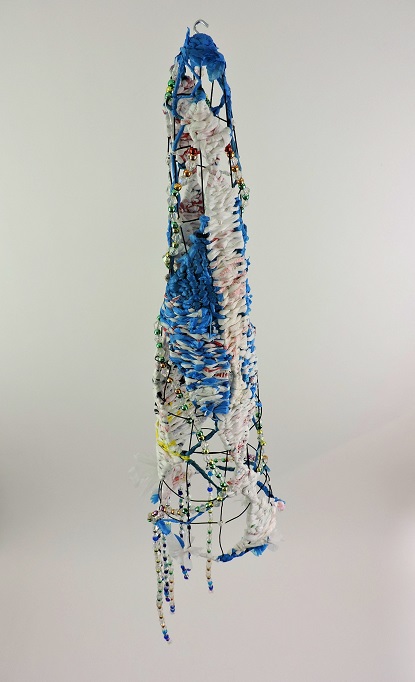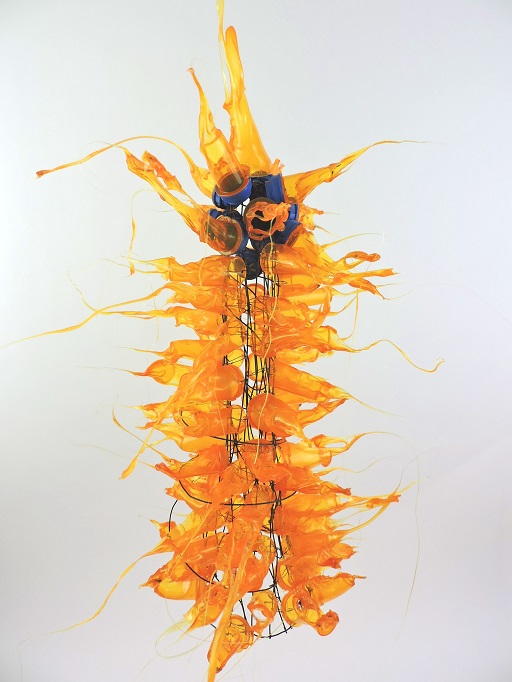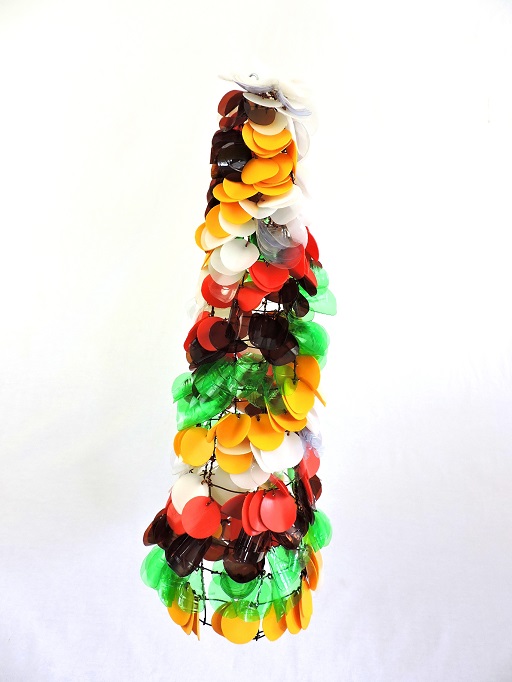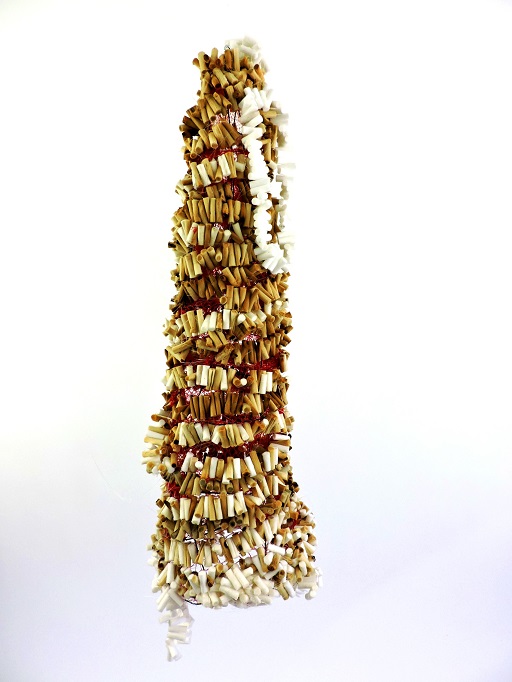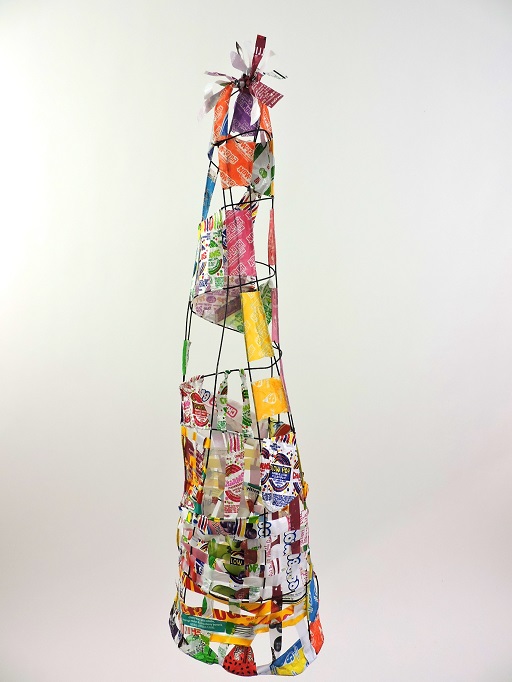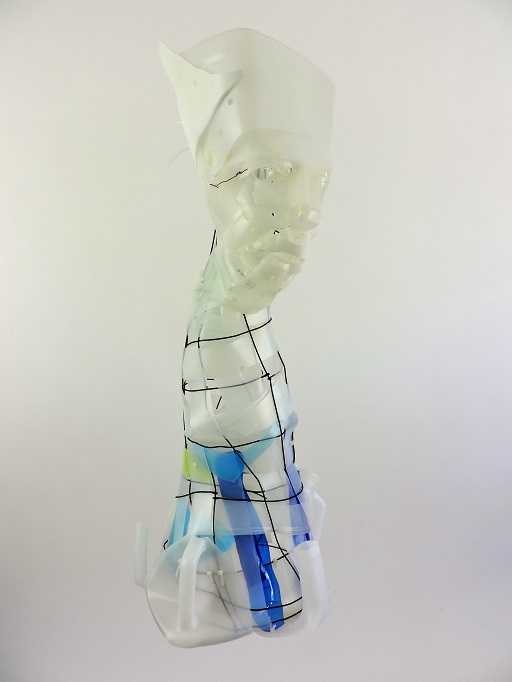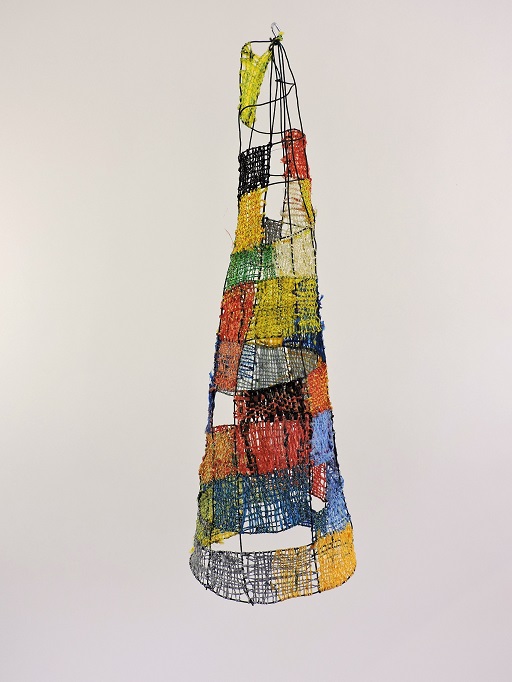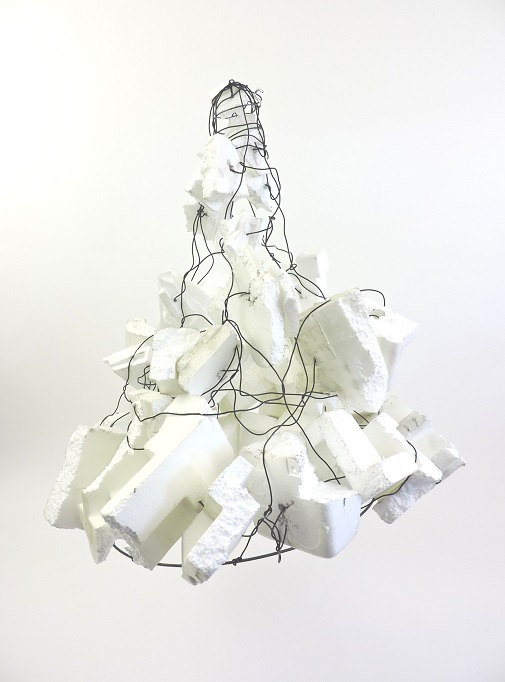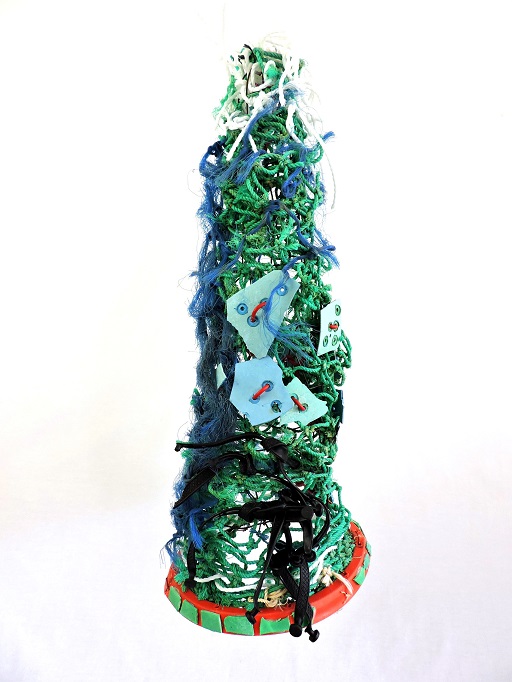For the past few years, Ron Shelton has devoted himself as curator/publisher at High Art Fridays, an online arts publication bringing artists from all over the world together under the auspices of a typical disregard for conventional aesthetics and production outside the domain of mainstream culture. In the midst of this, he has broadened his (and our) awareness of the “plastic problem” plaguing our planet. He has, as he puts it, acknowledged “the hyper-consumerism” that permeates our culture, to explore with other artists, our reaction to and responsibility for this issue. Part of his study includes transforming plastic materials into art objects.
With funding from The Cleveland Foundation’s Minority Arts Education Fund (MAEF) and The Ohio Arts Council (OAC), Ron joined forces with The Visit Arts Collective to engage local, national, and international artists to collaborate. Handwoven wire cone forms, “Art Hats,” were shipped across the globe for artists to embellish with plastics which plague their communities; this project is called HAF Connects, a collaborative effort with artist around the world through a common problem that threatens the survival of life on earth.
[kopa_blockquote border=”left”]Plastic has many properties that make it useful for many different purposes; it is lightweight, strong, waterproof, and inexpensive. For these reasons, plastic offers us many benefits in healthcare, technology, transportation, and food preservation. There is, however, a cost to these benefits, and that cost is the impact on our environment, our wildlife, and our health from plastic pollution. There is no “away” for plastic trash; although plastic breaks down when exposed to the sun, it does not entirely degrade but instead breaks down into smaller and smaller pieces known as microplastics. It is not known exactly how long it takes for a piece of plastic to degrade completely, but it is estimated to be 100’s of years. Cathi Lehn, Ph.D. City of Cleveland Mayor’s Office of Sustainability[/kopa_blockquote]
HAF Connects is on view now through October 5, at RampArts Gallery, in the 78th Street Studios complex in Cleveland. It’s an exhibit that weaves together multiple threads of ongoing interest for Shelton as an artist and curator. HAF Connects takes its name from his long-running curatorial project, High Art Fridays. The exhibit at RampArts gathers a dozen artists from Cleveland and around the world to work with a consistent hat form—a conical wire armature, approximately the proportion of a traffic cone. Participants included US-based artists Gina Washington, Lolita Wilson, Chester Hopkins-Bey, Cynthia Minet, Charmaine Spencer, Kole Robinson Brooks, and Meng-Hsuan Wu, as well as Shelton himself, and an international cohort including Thomas Bruce (Ghana), Patrick Tagoe-Turkson (Ghana), and Taeyoun Kim (Korea).
Each artist was challenged to respond to the theme of plastic waste in the world, and so they all incorporated plastic into their designs: containers, toys, cigarette filters, packing material, and more. As a whole, the exhibit calls attention to plastic as a profound global environmental problem. Individually, because of the materials they choose and the ways they use them, the artists’ works point to the variety and ubiquity of plastics, as well as their interests, connections, and concerns. You could say our society is addicted to plastics, and none made that point more emphatically than Lolita Wilson, who decorated her hat form with plastic fiber cigarette filters. You might think she picked them up like litter, which would in itself be a powerful statement, as cigarette butts are flicked carelessly outside just about every public building in any city. Still, Wilson’s way of gathering material was more personal than that: she says she got most of those cigarette butts by smoking them. And so most of them have that telltale yellowish-brown stain, pulled through the fibers, concentrated in the middle. Some of the butts don’t have that: they are clean, but used nonetheless.
It is not necessary to point out that the real problem lies in multiplying these quantities across the population of the earth, across the decades during which plastic consumer waste has been accumulating. We’ve all seen and been disgusted by documentaries about the Great Pacific Garbage Patch, a mass of plastic bits swirling out in the ocean, estimated to cover 1.6 million square kilometers of water, teeming with pieces small enough to get into the food chain. It’s believed to have increased in size tenfold every decade since 1945. There’s one in the Atlantic, too. It’s an out-of-sight, out-of-mind problem, and our industries and governments work to keep it that way. Perhaps we should thank China for no longer accepting cargo ships of plastic from the US, thereby calling it to our attention. Certainly, we should thank Shelton and the rest of these artists for putting the problem right in front of us.
Michael Gill, Executive Director at CAN Journal contributed to this story. Featured image: “plastic fire” plastic, wire 30 x 14 x 14″ by Ron Shelton, USA





